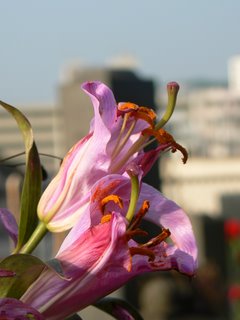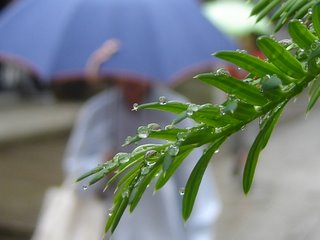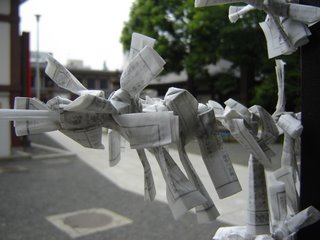The first thing that struck my mind was AUTUMN when my lead engineer told me that I have to make an overseas trip for the whole of November. This meant that I would be out of this country when autumn invades Tokyo and Yokohama.

It was the first autumn of my life; Not that I'm a year old but we really don't have any autumn in India. Living in the northern hemisphere, I was looking forward to walk over the dry leaves with everything painted in red, yellow, green and orange. Now, all my dreams had been crushed;
When he told me, "Nagappan-san, I think you will have a better environment over there than in Japan and hope you don’t have a problem"
With a smile (grin) stuck to my face, I just nodded. Would it not be so childish to tell him that I have stay for fall, in such a professional environment?
The sakura (cherry blossoms) starts in the south and proceeds to the north while koyo (Autumn foliage) starts in the north and proceeds to the south. It starts in Hokkaido in September and ends in Tokyo in early December. Narrowing down, I got the point, "I've got to travel north". But, I was not really able to zero down as most of the places were distant and unaffordable while the others, I had visited already.
It was during this time, that a fellow travel buff informed me of Nishizawa keikoku (valley) in the Yamanashi prefecture and the best time was just the following weekend. I got excited very much about heading there, had a feel of getting back something that had been presumed to be lost, searched all over the internet, gathered some info, got my Japanese colleague check the bus timings and made a itinerary. As the valley has not become so popular among the tourists as well as the locals, gathering information was a bit difficult.
Japan is a land of mountains, volcanoes, lakes and coasts, greenery and forests except for the urbanized Kanto plain; the nature is preserved as national parks. Still, the Japanese government is occasionally chided for restructuring the terrain, planting coniferous trees in grid wise patterns. But the Nishizawa valley is being claimed to be untouched nature forming a part of the ChuChubu-Tama national park. Even though, all the Japanese people whom I enquired, were not knowing about this place, they told me that it was the season for grapes, apples and pears in that part of Yamanashi-ken.
Einstein proved it right again. Me, a lazy geek woke up to my own astonishment at 2.45 am to start for the trip; and adding to it, cooked some lunch also. We started 15 minutes ahead of our schedule and walked our way to Yokohama station. The Sotetsu line which connects our place to Yokohama would not have started operating. On that wee hour, we could see so many Japanese, mostly the younger lot returning to their homes after a ‘Friday Night’ rock session, there was alcohol in the air, polluting the dawn outright. The Yokohama station was completely deserted except for some snoring boozers in their business suits.
Taking the Keihin-Tohoku line, we got off at Higashi-Kanagawa to change for the Yokohama line. We travel in the Keihin-Tohoku line everyday to office and we had never got down at this station, for any reason in these 9 months. Huh, Life is getting unbelievably monotonous. From Higashi-Kanagawa, it was an hour’s drive to Hachioji, as the journey progressed, the cityscape gradated from skyscrapers, to apartments, to double storied houses, to farms and finally mountains. Still, the journey had not begun. From Hachioji, It was the JR Chuo line to Takao and then again the same line to Enzan. It was slightly drizzling when we reached Takao station; we were feeling the cold with the moisture in the air. The early morning dew, the dampness all over and the clouds covering the dense greenery in the mountains sketched beautiful memories of a hill-land railway station. It would have been ideal if the electric trains were replaced by the steam engines of the British era …. But lol, the British were never able to imperialize Japan. The change in the landscape was tremendous once we had traveled 1 hour from the concrete jungles.
The journey to Enzan took a little more than an hour and was generally uneventful, except that we were not bored. It was a lovely sight outside the window as the train traversed along mountains, streams and tunnels; inside the train, there were a group of school kids with tennis rackets, having fun and frolic all the way, pulling each other, hit and run games, playing with their mobile phone cameras and sort. Nirav struck up with them, and we took some snaps. Come, Enzan …… we stepped into a sleeping town, not a big tourist destination, and not at all crowded. There were only 6 buses per day from Enzan to Nishizawa and I was very much worried about getting the bus ticket. And we were there in Enzan, too early for anything to do, not to mention buying a bus ticket.
It did not take much time to locate the bus stop and the lonely guy sitting in the bus-stop re-assured that the bus for Nishizawa keikoku stops there, the first one is at 9.05 am and the ticket can be bought inside the bus. Thanks to all the broken Japanese that I could manage. Hardly, we could get any information in English in such areas. All the signboards, maps and info would be in Japanese and you can bet a million that you will not find an English speaking Nihon-jin.
We had about an hour to kill, just roamed around the station, took some snaps and came back to have some breakfast; the next two trains had come and there were more people waiting for the bus. All of them were old people except for one middle aged lady. Then came a bus at 8.35 am but nobody was boarding it. Then, the driver came down and told something and all of them alighted the bus, we too followed. There was some commotion and finally it was obvious that the bus will stop half-way from where we have to catch another bus, but we would be reaching Nishizawa before the first straight bus reaches there. The bus journey was again a little more than an hour through streams, bridges, ridges, grape vineyards, and apple and pear trees giving pre notion of what the valley has got to offer.
It was 9.45 am when we reached the entrance of the valley; we could see more people there who had come in taxis and other buses. There it was, my first feel of autumn, a tree in all crimson; the crimson reminding me of Indian police stations. Did anybody creep over in the night to paint all the leaves red? No, not possible. Somebody can paint a single tree but not all the trees in a mountain and that too not in a single color, but a spectrum of colors, a collage. Its all mother nature; the wonders of creation and evolution of life which mankind is still trying to understand. This is just one part of the play that nature enacts in synchrony with the seasons.
Japan has four distinct seasons and the whole of the Japanese life and culture is interwoven with the seasons and nature. Their festivals, their bargain sales, their names, their sweets and savories, all of them are based on season changing and nature. Nature to Japan is what religion is to in India and rest of the world. The Japanese have names of mountains and rivers while people in the rest of the world have names from the Bible and that of other local Gods. The Sakura and Momikaji festivals are synonymous to Pongal and Deepavali. The hanabi (fireworks festival) relates to summer and there a lot of legends about seasons like the pre-autumn folk-lore festival that I had attended once in Okusawa. The basis of Shinto religion is nature. The Japanese, still live in harmony with the nature, recycling and segregating the garbage into 15 different categories. The world will soon be following them.
We were soon at the beginning of the trekking loop; the pathway was wide and not so crowded. The sun was in it’s fully glory, but not scorching. The sunlight was reflecting on the bright colored leaves, giving an illusion of the leaves burning. Photographers could be seen all around with their tripods, trying to capture nature into film for eternity. I had seen too many fall photos, but this sight that I saw through my naked eye is just incomparable. The sight is not so scenic and captivating as in a photograph, still it gives me a feel, a feel to be in a place where everything is changing every moment. Over there, a green leaf is turning yellow, while the other one in the neighboring tree turns orange and saffron and red and crimson, some older buff is getting dried, and finally somebody is falling off the tree completing a cycle from summer to foliage to fall. There I was standing over the dried fall leaves, a testimony to this great act of nature.
It was a treat to the eyes. Something that I had not experienced before . . . all that was registered in my brain was "TREE -> GREEN" and it was quite difficult to redefine the relationship , 26 years later.I was intrigued to my photography, the trek was a bit hard but it was very pleasant with the stream flowing to the left of our trek route, the sun blazing through the thick forest and a cool breeze sweeping into. We were the only foreigners in the long queue of photographers, family pick-nickers and trekkers. Some raised eyebrows, a guy stopped in to ask if we are from Pakistan while an another English speaker as admiring the math skills of Indians . . smiling them all away, we continued before sitting by a stream to have our breakfast. That was a county English style except for the absence of a countess ...lol.
























